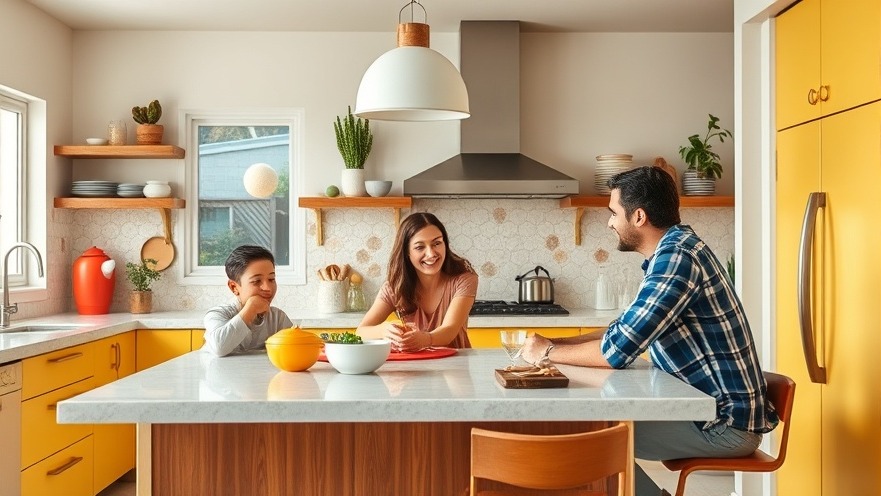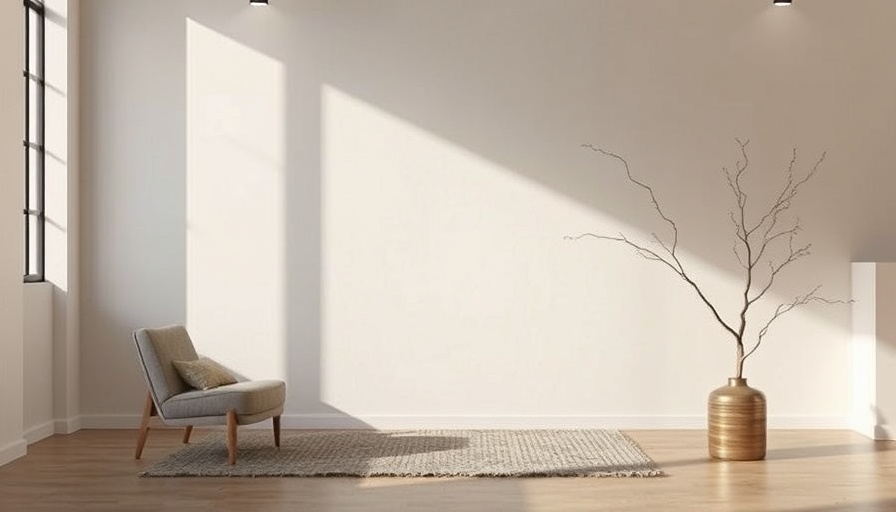
Creating Visual Harmony in Your Home
Visual harmony in your home acts like a soothing balm, creating spaces that allow for comfort and connection. For families in the greater Hampton Roads area—especially those navigating the challenges of military life—achieving that equilibrium can transform your living environment into a retreat. The essence of interior design is to create a seamless flow that reflects both individual tastes and the demands of everyday life. Here’s how to cultivate that harmony.
Understanding the Basics of Interior Design
Before diving into specific styles, it’s essential to grasp some fundamental principles of home interior design. This includes color schemes, spatial layout, and texture balance. For instance, a minimalist living room embraces simplicity by utilizing a neutral color palette, which can be particularly calming amid the hustle and bustle of family life.
Exploring Scandinavian and Modern Designs
Scandinavian interior design is prized for its functionality and minimalistic approach. Known for simplicity, it encourages airy spaces filled with light. This style often features a blend of rustic elements, such as wood details, which can easily be paired with contemporary touches, creating a distinct yet harmonious living space. Family-oriented homeowners might find that Scandinavian living rooms are perfect for both social gatherings and quiet family moments.
Tailoring Spaces to Your Lifestyle
One of the most significant approaches to achieving visual harmony is ensuring that your spaces reflect your family's lifestyle. For busy households, kitchen interior design should focus on efficiency and comfort. An open-concept kitchen with adequate storage can create a welcoming atmosphere that is functional and visually appealing.
Practical Tips for Achieving Balance
Here are some actionable insights to create visually harmonious spaces:
Color Coordination: Choose a palette that resonates with your family’s personality. Soft tones can create a calm environment, while vibrant colors can inspire energy.
Focal Points: Incorporate a standout piece, such as an artwork or a stylish piece of furniture, to draw the eye and encourage a sense of cohesiveness.
Layering Textures: Mixing textures can add depth. For example, pairing a soft rug with sleek furniture can maintain balance while being visually appealing.
Incorporate Nature: Bringing in plants not only improves air quality but also adds life within interiors.
Future Trends in Interior Design
As homeowners in Hampton Roads embrace evolving trends, look for an increase in demand for sustainable and eco-friendly materials. More families are gravitating towards designs that are not just visually stunning, but also environmentally conscious. Incorporating reclaimed wood and energy-efficient fixtures can add both value to your home and peace of mind.
In conclusion, visual harmony in interior spaces is vital for creating a nurturing environment. For families seeking professional guidance, working with a home designer or interior decorator can elevate the potential of your spaces to truly harmonize with your lifestyle. Embrace these expert insights, and transform your home into a haven of tranquility and beauty.


